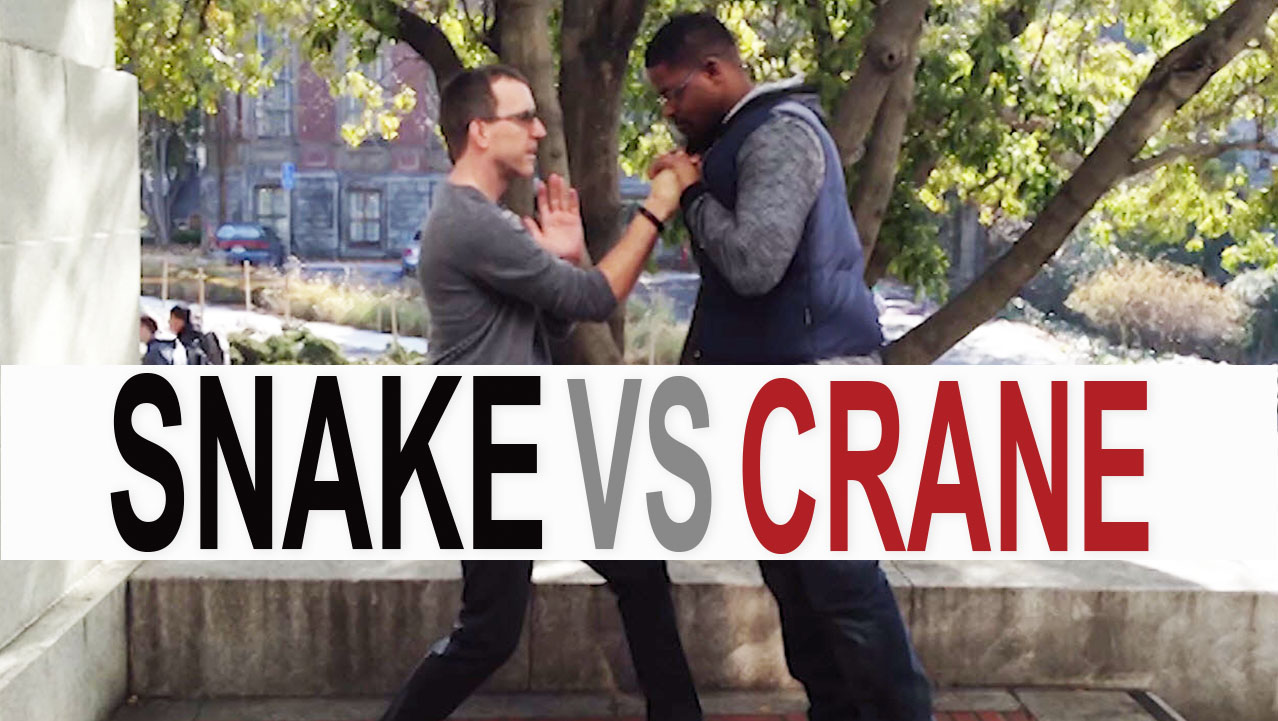
Hitting Power Comes from Structure
January 27, 2016
Question from the Comments: “How can I tell that the elbow is in alignment with the hip or not?”
This is a great question and one that is at the heart of structure and thus striking power.
Teaching structure is interesting because I find that in Wing Chun, it is often alluded to by teachers but in vague ways that are hard to understand.
We are told that the Wing Chun training stance (Yee Gee Kim Yeung Ma) enables us to develop structure. We are told it has to do with “sitting” and the angle of the hip and a “straight” spine.
We are shown these things and expected to take it in through the eyes, seeing it from the outside and then be able to replicate it inside our own bodies through feeling , since we can’t see ourselves as we move (unless we film our movements, which is an excellent practice).
Over the years, I’ve come up with various ways to demonstrate structure to my students through feeling. This helps add another level of understanding as the student tries to develop better structure.
One thing to keep in mind about structure is that its always changing.
We don’t fight standing still. Fighting is fluid and dynamic. Our relationship to our opponent is always changing.
Also, structure is a relative concept. Structure relative to what?
In fighting, we want our defense (in Wing Chun, generally our hands and arms) and our offence (hands and arms again) to be structured relative to our opponent and the ground.
We must learn to slip into what we call a “structured position” as naturally as we take a step. As the angles in the fight change, your facing will change. In fact, “facing” is another word for structure. When I turn my hips and shoulders toward my opponent, I am “facing” him in a technical sense.
This question also begs for a fuller description of balance and center of gravity, but I’ll tackle that later.
The video is my short answer (showing is better than telling). And feeling is even better than showing in this case, but you’ll have to do that part on your own!
See how I get into YJKYM (the horse stance) and how this stance has in it all the elements needed to create a structured position relative to my “opponent” Buka.
Buka leans his 220+ pounds onto my fist. If I stepped forward and hit him with this structure, the structure will be able to “support” his weight easily and my legs can act as shock absorbers and transmitters of force up and down the power chain (ankle, knee, hip, the single structure created by having a locked back\pelvis\clavicle\scapula, into the elbow and out the wrist). And the force can travel in either direction.
You can see how his weight compresses my structure, but the structure can easily handle the weight because its distributed efficiently and ultimately travels to my back heel and the ground.
Sifu Lam calls the joints “power points” because they are flexible and let power flow through them.
Notice Buka’s weight does not cause me any strain. My joints and tendons are doing most of the work because they are aligned. The muscles just hold the shape in place and then my back leg drives the step.
If my elbow was out of alignment, it would flare out or collapse in and I would have to strain with my muscles to hold Buka up.
Combine the physics of this structure with the momentum of a step, making the opponent wrong, the speed of your arm as it goes forward, keeping this attack on the centerline, a little step into the opponent’s position, and some of the other elements of a Wing Chun action, and you get the dramatic results you see in Sifu Lam’s or Greg LeBlanc’s demos.
A “Wing Chun action” combines many elements which act as force multipliers. Use the other elements (angling, trapping, clearing) of Wing Chun to get a clear shot and you can blow somebody’s head off.
